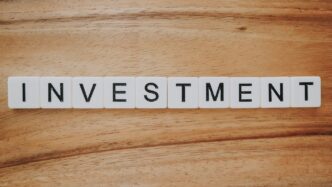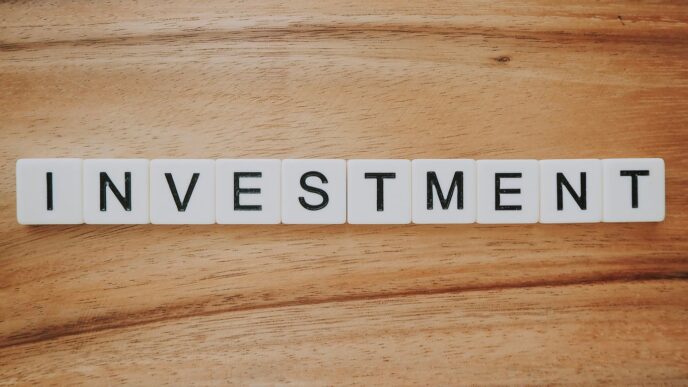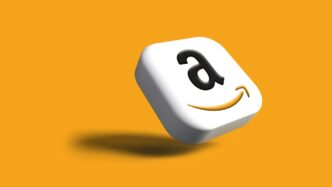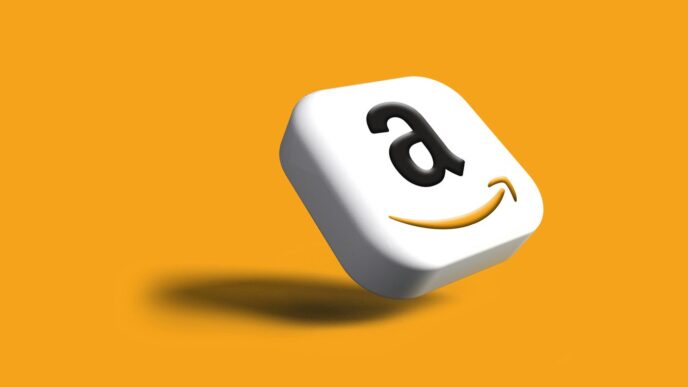Embracing Customer Value Beyond Acquisition
It’s easy to get caught up in the thrill of landing new customers. We see the numbers tick up, and it feels like progress, right? But honestly, many SaaS companies get stuck in what you could call an ‘acquisition addiction.’ They pour tons of money and effort into getting new sign-ups, sometimes without a clear picture of whether those customers are actually profitable in the long run. It’s like constantly filling a leaky bucket. You’re spending a lot to get water in, but if you don’t fix the holes, you’re not really getting ahead.
Shifting Focus from Acquisition Addiction to Monetization
Think about it: if you improve how much money you make from each customer, even by a small amount, the impact on your bottom line can be huge. It’s often way more effective than just signing up a bunch of new people. This means looking closely at your pricing, how you package your services, and finding ways to offer more value that customers are willing to pay for. Are you leaving money on the table because your current plans don’t quite fit what some customers need? Maybe a higher tier with extra features or a specialized add-on could work. It’s about making sure every customer relationship is as strong and profitable as it can be, not just about the initial sale.
The Evolving Buyer’s Market in SaaS
Buyers today are smarter and have more choices than ever. They’re not just looking for a product; they’re looking for a solution that truly works for them, and they expect ongoing support. This means the old way of just acquiring and forgetting doesn’t cut it anymore. Customers want to feel valued, and they’re more likely to stick around and even spend more if they feel like you’re invested in their success. The market has shifted, and companies that ignore this are going to fall behind.
Cultivating Existing Users for Sustainable Growth
So, what does this look like in practice? It means putting as much energy into keeping and growing your current customers as you do into finding new ones. This involves a few key things:
- Reducing Churn: Figure out why customers leave and try to stop it. Sometimes it’s as simple as making sure your payment system works smoothly so people don’t get kicked out by accident. Recovering even a small percentage of customers who were about to leave can free up resources for other growth efforts.
- Smart Pricing and Packaging: Regularly check if your pricing and feature sets still make sense. Test different options to see what your customers respond to. This isn’t a one-time thing; it’s an ongoing process of learning what your market truly values.
- Customer Success: This is huge. It’s about actively helping your customers get the most out of your product. When customers succeed, they’re more likely to stay, upgrade, and even tell others about you. Happy, successful customers are your best marketing asset.
Leveraging AI for Accelerated SaaS Growth
It feels like everywhere you look these days, AI is the hot topic. And for good reason. Companies that are built around AI, what we’re calling AI-native, are seeing growth rates that are pretty wild. We’re talking about revenue jumping up by over 90% year-over-year for some smaller ones. And it’s not just about growing fast; it’s about growing smart. These AI-first businesses are also way more efficient. Take Cursor, for example. They hit $100 million in revenue with just 30 people. That’s a far cry from the old days where you’d need hundreds of employees to reach that same milestone. The old benchmark was maybe $400,000 in revenue per employee, but these new companies are pulling in $1 million per employee. It’s a whole new ballgame.
AI-Native Companies and Unprecedented Scale
This shift isn’t just about new tech; it’s changing how software companies operate from the ground up. For SaaS leaders, the message is clear: adapt or get left behind. The speed at which AI is changing things means you have to be ready to jump on new chances. The big question for any SaaS company right now is whether you’re going to be the one leading this AI transformation or just watching it happen.
Achieving Remarkable Efficiency with AI
AI is really shaking things up when it comes to how efficiently companies can run. Think about it: tasks that used to take a lot of human hours can now be automated or sped up significantly. This frees up your team to focus on the really important stuff, like building better products and figuring out what customers actually need. It’s about working smarter, not just harder. We’re seeing companies cut down on operational costs and get more done with fewer resources. It’s a pretty big deal for the bottom line.
The Future of SaaS: Lead or Follow
So, what’s the play here? You’ve got to decide if you’re going to be proactive about AI or reactive. Being proactive means looking at how AI can change your product, your operations, and even your business model. It’s about building AI into the core of what you do. Being reactive means waiting to see what competitors do and then trying to catch up. That’s usually a losing strategy. The companies that are going to win in 2025 and beyond are the ones that embrace AI now and figure out how to use it to their advantage. It’s not just about having AI features; it’s about rethinking your entire approach through an AI lens. The market is moving fast, and you need to be ready to move with it.
Strategic Product-Led Growth Implementation
Product-Led Growth, or PLG, is a way of doing business where your product basically sells itself. Instead of relying heavily on sales teams or big marketing campaigns to get people to sign up, you let users experience the product’s value firsthand. Think of it like offering a really good free sample that makes people want to buy the whole thing. This approach is super effective because it cuts down on how much it costs to get new customers and builds a more natural growth path.
Minimizing Time-to-Value for Users
Getting users to see the benefit of your product quickly is key. If they have to jump through a bunch of hoops or wait too long to understand what your software can do for them, they’ll likely just leave. The goal is to make that initial experience as smooth and rewarding as possible.
- Onboarding: Make the first steps easy. Guide new users with clear instructions, tooltips, or short video tutorials. Don’t overwhelm them with every single feature at once.
- Core Feature Focus: Highlight the main problem your product solves right away. Users should be able to achieve a meaningful outcome with your software within their first session.
- Intuitive Design: A clean, easy-to-understand interface means users can figure things out on their own without needing a manual.
Defining Product-Qualified Leads
Not everyone who signs up for a free trial or a freemium version is ready to buy. Product-Qualified Leads (PQLs) are users who have shown a strong interest and engagement with your product, indicating they’re likely to convert into paying customers. Identifying these users helps your sales and marketing teams focus their efforts where they’ll have the most impact.
Here’s how you might spot a PQL:
- Usage Frequency: They log in regularly, say, more than 3 times a week.
- Feature Adoption: They’ve used key features that are tied to your paid plans.
- Collaboration: They’ve invited team members or shared their work within the product.
- Time Spent: They’re spending a significant amount of time actively using the core functionalities.
Integrating Virality and In-App Guidance
To really make PLG work, you want users to bring in more users. This is where virality comes in. Think about how apps like Slack or Zoom spread – people use them for work, invite colleagues, and suddenly, the whole company is on board. You can build this into your product.
- Referral Programs: Reward users for inviting others. This could be through discounts, extended trials, or premium features.
- Collaboration Features: Design your product so that users naturally need to work with others. Sharing documents, co-editing, or team dashboards can encourage adoption.
- In-App Messaging: Use pop-ups or notifications within the app to guide users, announce new features, or prompt them to take the next step, like upgrading or inviting a teammate. This keeps them engaged and moving forward.
Content Marketing and SEO for Durable Assets
Think of content marketing and SEO as building a really solid, long-term asset for your SaaS company. It’s not about quick wins or paying for every single visitor. Instead, it’s about creating stuff that people actually want to read, watch, or use, and making sure search engines can find it. When someone has a problem your software can solve, you want your content to be the first thing they see. This builds trust and shows them your product is the logical next step.
Attracting Audiences with Valuable Content
This is where you become the go-to resource in your niche. Companies that do this well, like HubSpot or Ahrefs, have built huge followings by giving away tons of useful information. They publish blog posts, create free tools, and write detailed guides that answer the exact questions their potential customers are asking. It’s about solving problems for people, even before they become customers. This builds a relationship and makes them more likely to consider your product when they’re ready.
To make this work, you need to really understand what your ideal customer is going through. What are their pain points? What are they searching for online? Your content needs to address these directly. It’s a commitment to consistently put out good material and then tweak it so it works even better.
Establishing Thought Leadership Through SEO
SEO, or Search Engine Optimization, is how you make sure all that great content gets found. It’s not just about stuffing keywords everywhere; it’s about making your content understandable and useful for both people and search engines. When you rank well for relevant searches, you get free, consistent traffic from people who are actively looking for solutions.
Here’s a breakdown of how to approach it:
- Focus on Buyer-Intent Keywords: These are the search terms people use when they’re close to making a decision. Think phrases like “best project management software for small teams” or “Asana alternatives.” This brings in people who are already thinking about buying.
- Build Topic Clusters: Create a main page about a broad topic, like “Customer Relationship Management.” Then, create several other articles that dive into specific parts of that topic, such as “how to choose a CRM” or “CRM implementation tips.” This tells search engines you really know your stuff on that subject.
- Repurpose Your Content: Don’t let a great blog post just sit there. Turn it into a short video, a series of social media posts, a podcast episode, or an email newsletter. This gets your message in front of more people on different platforms.
Driving Organic Traffic and High-Quality Leads
When you combine valuable content with smart SEO, you create a powerful engine for growth. You attract people who are genuinely interested in what you offer. This isn’t just random traffic; it’s a stream of potential customers who have already learned something from you and trust your brand a little bit. They’re more likely to sign up for a trial, request a demo, or even buy directly because you’ve already demonstrated your value.
This strategy is a marathon, not a sprint. It takes time to build up your content library and see SEO results. But the leads you get this way are often higher quality and have a lower cost per acquisition compared to paid advertising. It’s about building a sustainable way to bring in customers who are a good fit for your SaaS product.
Maximizing Lifetime Value Through Customer Success

Look, getting customers in the door is one thing, but keeping them happy and spending more money over time? That’s where the real magic happens for SaaS companies. It’s not just about selling a subscription; it’s about building a relationship where your customers actually achieve what they set out to do with your software. When they win, you win, and that’s how you build a business that lasts.
The Role of Customer Success in Expansion Revenue
Customer Success isn’t just a fancy department; it’s a whole way of thinking. Instead of just waiting for support tickets to roll in, your Customer Success team is actively working to make sure clients are getting the most out of your product. They’re checking in, offering tips, and making sure the software is solving the problems it was bought for. This proactive approach means customers are less likely to leave, and more importantly, they’re more likely to see opportunities to use more of your product. Think about it: if a team is using your project management tool for one department and loving it, they might be open to using it for another department too, or maybe upgrading to a plan with more features. That’s expansion revenue, and it’s way cheaper to get from an existing happy customer than to find a brand new one.
Strategies for Reducing Customer Churn
Churn, or customers leaving, is the silent killer of SaaS growth. You can’t just hope people stick around. You need a plan. Here are a few things that really help:
- Know Your Numbers: Keep an eye on how customers are using your product. Are they logging in regularly? Are they using the key features? If usage drops, that’s a red flag. You can even create a ‘health score’ for each customer based on these kinds of metrics. A low score means it’s time to reach out before they even think about canceling.
- Make Onboarding Smooth: The first few days with a new software are critical. If it’s confusing or takes too long to get value, people will bail. Make the signup easy, guide them through the first important steps, and help them hit that ‘aha!’ moment fast. This could be through helpful tooltips, short video guides, or even a quick personalized call.
- Build a Community: Sometimes, customers can help each other. Setting up a forum or a Slack channel where users can share tips and tricks can be a lifesaver. It reduces the load on your support team and makes users feel more connected to the product and each other.
Building Loyalty and Advocacy
When customers are successful and happy, they don’t just stick around; they start talking. They become your best salespeople. Think about how often you recommend a product or service that’s really made your life easier. That’s advocacy. To get there, you need to consistently show up for your customers. This means:
- Listen and Act: Pay attention to feedback, both good and bad. When customers suggest improvements, seriously consider them. Acting on feedback shows you care and are committed to making the product better for everyone.
- Celebrate Wins: When a customer achieves a big goal using your software, acknowledge it. Share their success (with their permission, of course). This not only makes them feel good but also provides social proof for other potential customers.
- Offer More Value: Look for ways to provide ongoing value beyond the core features. This could be through webinars, advanced training sessions, or exclusive content. The more value you provide, the harder it is for them to imagine leaving.
Ultimately, focusing on customer success turns your existing user base into a powerful engine for sustained growth.
The Fractional Advantage in SaaS Execution
Look, building a great SaaS product is one thing, but getting it to really take off? That’s a whole different ballgame. We’ve talked about all these cool strategies – product-led growth, content marketing, customer success – and they’re all solid. The problem is, actually doing them well often needs someone with serious experience. Someone who’s been there, done that, and probably has the t-shirt. Hiring a full-time executive for every single one of these roles? For most growing SaaS companies, that’s just not realistic. The cost is huge, and honestly, you might not even need them 40 hours a week. That’s where the fractional executive comes in. Think of it like bringing in a seasoned pro for just the hours you need them. You get top-tier strategy and execution without the massive overhead.
Bridging the Gap Between Strategy and Doing
It’s easy to get excited about a new growth strategy. You read about it, you see how it worked for someone else, and you think, ‘Yeah, we need that!’ But then comes the hard part: making it happen. This isn’t just about having a good idea; it’s about having the know-how to put the pieces together. You need someone who can:
- Figure out what actually needs to be done, step-by-step.
- Know which tools and processes will make things run smoothly.
- Keep an eye on what’s working and what’s not, and adjust when needed.
- Make sure the team is actually doing the work and doing it right.
This is where the real magic happens – turning a plan into actual results. Without this bridge, even the best strategies can just sit on a shelf.
Accessing Senior-Level Expertise
Imagine you need someone to build out your content marketing engine or set up a killer product-led growth funnel. You could try to hire a VP of Marketing or a CRO, but that’s a long, expensive process. Plus, are you sure they’re the right person for your specific stage? A fractional executive, on the other hand, is someone who has likely done this exact thing multiple times for different companies. They bring that battle-tested knowledge with them. You’re not just getting advice; you’re getting someone who can roll up their sleeves and help implement.
Here’s a quick look at what you might get:
| Role | Typical Hours/Week | Key Contribution |
|---|---|---|
| Fractional CMO | 5-15 | Content strategy, brand building, demand generation |
| Fractional CRO | 10-20 | Sales process, GTM strategy, revenue operations |
| Fractional Head of CS | 5-10 | Retention programs, expansion revenue, customer loyalty |
Achieving Scalable and Predictable Revenue
When you have experienced leaders guiding your execution, things start to click. Strategies that felt overwhelming become manageable. You can start to see how different parts of your business work together to drive growth. This isn’t just about short-term wins; it’s about building a system that can grow with you. By bringing in fractional talent, you’re not just filling a gap; you’re investing in the ability to execute consistently. This leads to more predictable revenue because you’re not constantly scrambling to figure things out. You have a plan, and you have the right people to make sure it gets done, allowing your company to scale without breaking.
It’s about getting the right kind of help, at the right time, without the long-term commitment. This approach lets you focus on what you do best – building an amazing product – while experts handle the complex execution of your growth plans.
Wrapping It Up: What’s Next for SaaS Growth?
So, we’ve talked a lot about how the software world is changing, especially for companies selling subscriptions. It’s not just about getting new people to sign up anymore. You really need to think about keeping the customers you have happy and making sure they see the value in what you offer. That means looking at how you price things, making your product easy to use from the start, and actually helping your customers succeed. Companies that focus on this balance – bringing in new folks while also taking care of their existing base – are the ones that seem to be doing the best. It’s a bit like tending a garden; you need to plant new seeds, sure, but you also have to water and care for what’s already growing. Keep an eye on what your customers need, adapt your strategies, and you’ll be in a much better spot for the long haul.














